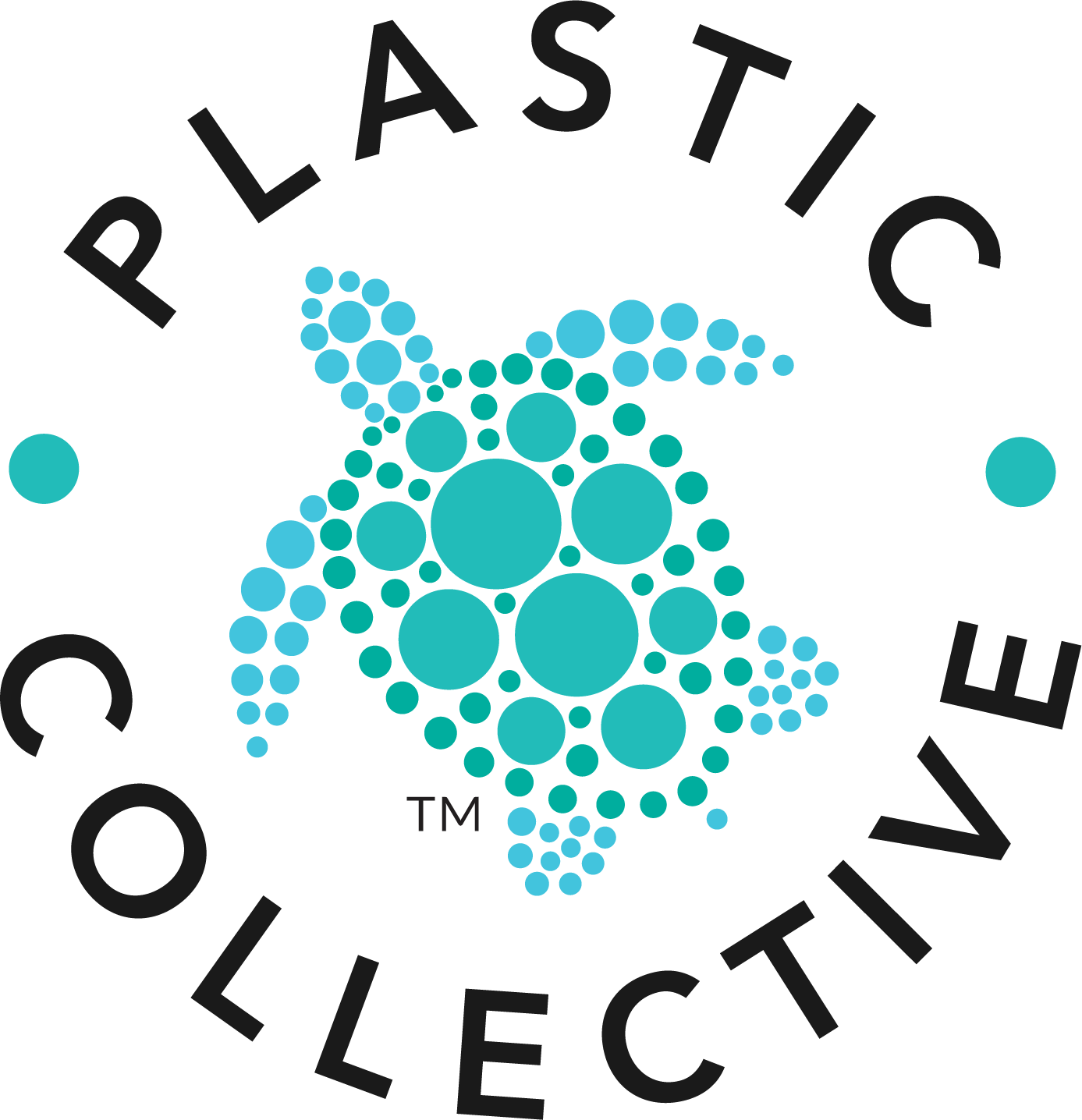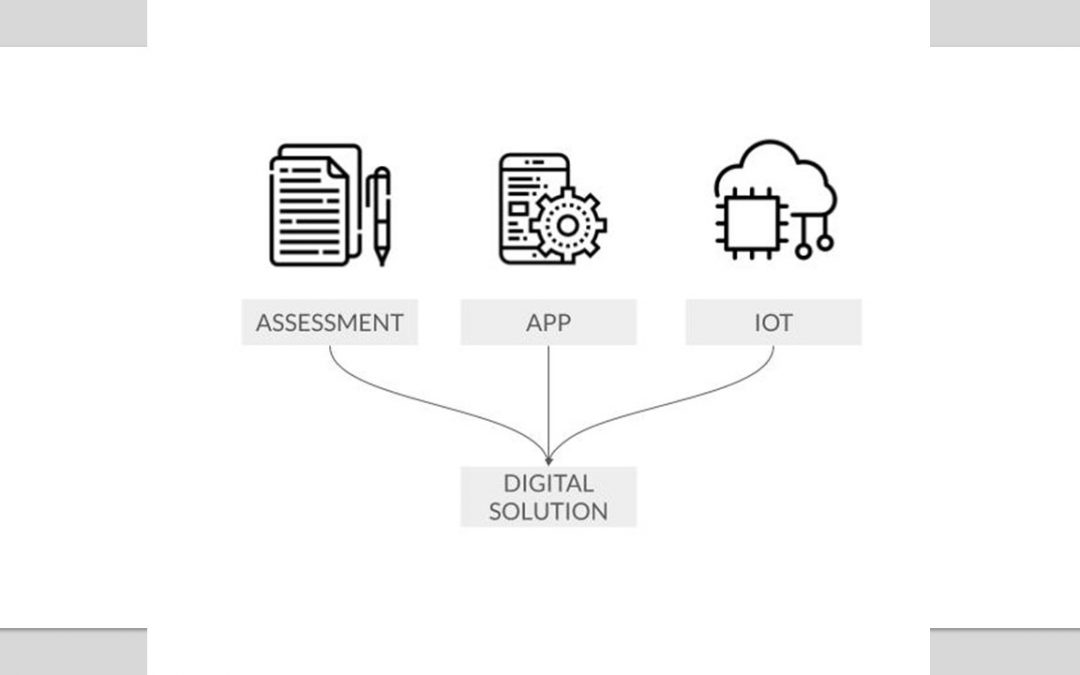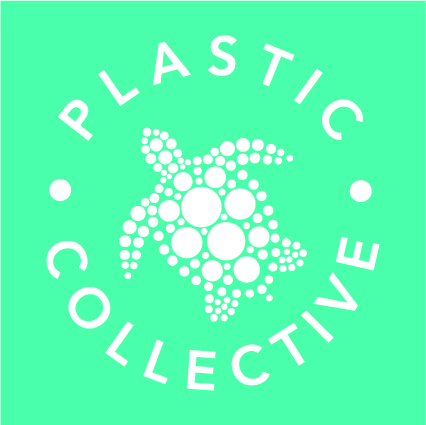Image sourced from Plastic Collective.
We take a deeper look with Aly Khalifa into how Plastic Collective’s recycling software is integrated into its wider system to support communities with their plastic waste management.
Software origin – a need for good data
So, what was the motivation to design this software? We need to make sure we are having a real impact. For example, how can we be certain that plastic is actually being collected and recycled? Aly explains that having proper information about what is happening on-the-ground ensures transparency within Plastic Collective’s processes. This is the goal of the software.
So, in order to carry out this ambition, good data is imperative: “Yes, we need to have good data and we need to have a good data management system and software is the best way to do it.” It’s no small feat. “The software requires a variety of tools for different parts of the process when developing a collection/recycling project. From there we can then potentially create, manage and implement – plastic credits.”
Developing the software
Developing the software has been a journey, but will the work ever be completely ‘finished’?
“It’s an ongoing activity. I don’t think the work will ever be done, however over the past year and a half we’ve developed a significant group of tools. I would say it’s a digital solution that codifies what we’re doing in the physical world. Measuring the weight of various types of plastic such as scrap plastics being harvested, categorising it, looking at the effluent and assessing energy usage – the Internet of Things is key to this process being played out. We’re combining sensors of the real world and bringing that into a digital platform where you can see the data, but it’s really all about what’s happening in the real world.”
A three-layer cake solution
When it comes to applying the digital solution within local communities, Aly describes the process as a ‘three-layer cake’. The first layer concerns working with local partners to assess the local environment. In essence, how much plastic there is, as well as trying to understand what the local customs are: “That first step is really just trying to understand what is going on.” The second layer concerns project validation, with more questions needing to be answered: “Essentially, to carry out a project, we need to define and accurately describe what is happening. Who owns the land, who’s going to be doing what, how much material are we looking at, how are we going to go about doing it?”
And finally, the third layer, project verification, the day-to-day handling of things. Again, more questions are asked: “So this batch of material comes in – how was it handled, who worked on it, where did it come from, what is the energy footprint of that material?” What the buyers of this material will see at the end of this process is a certificate displaying what recycled material they have bought and where it came from. Aly emphasises that the material has gone through this three-layer cake process to get to this point.
Adapting this three-layer process to the local operators is a key challenge, with the software and sensor solutions customised to each project. “So, if you’re harvesting ghost nets in the Gulf of Carpentaria or you’re dealing with river waste in Indonesia you’re starting off with different communities, languages, and regulations that you have to be mindful of. Eventually you get to a user interface that probably looks pretty similar from one to the other, but really they’re quite different.”
Another challenge was creating the three-layer cake workflow to begin with. Aly asserts that there is an information onboarding process in order to get into digitisation. “You can’t just ‘poof!’ and be digitised. It takes thoughtful reflection and cultural understanding and attention to training to do it properly.”
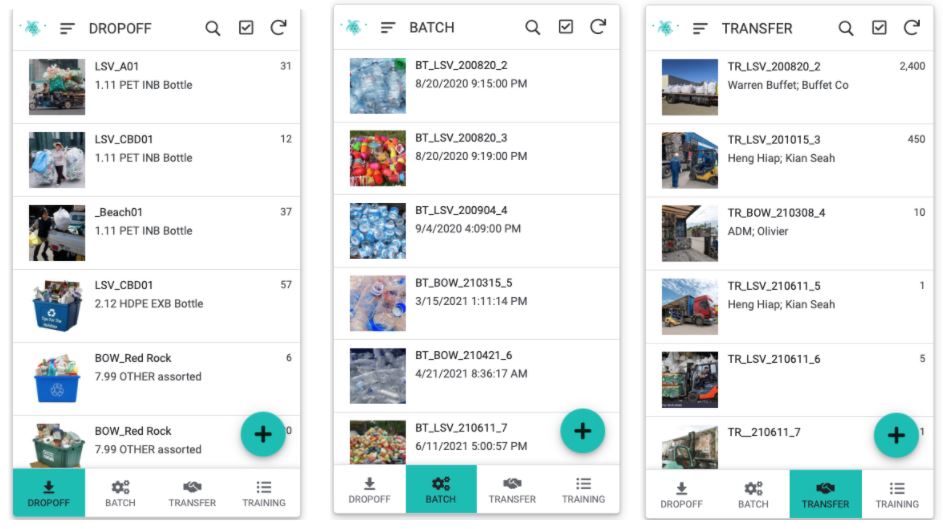
Figure 1: Plastic Collective’s Digital Solution. A close-up of the Dropoff, Batch and Transfer interfaces of the application.
Presenting the data
So how exactly is this data organised? Again, the key is presenting dashboards which are relevant to that particular person. It also depends on the regulations that projects have to follow. Aly gives examples: “There is an auditor dashboard if you are verifying to the Verra Plastic Standard, which shows you exactly what you need. In other cases, we might be selling to someone who’s been doing GRS (Global Recycling Standard), and they might be wanting to maintain provenance of that material thereafter. Therefore, you would have a GRS dashboard or a certificate that allows GRS to then maintain that chain of custody throughout their system.”
Project owners will also want to check the amount of material they have collected and recycled on a particular day too, “and so there’s different dashboards depending on who that user is and the information they’re looking for. Ultimately, all this information is living within a comprehensive database that is cloud-based, but is realistic on data transfer with remote communities.” The automation of inventory tracking is key.
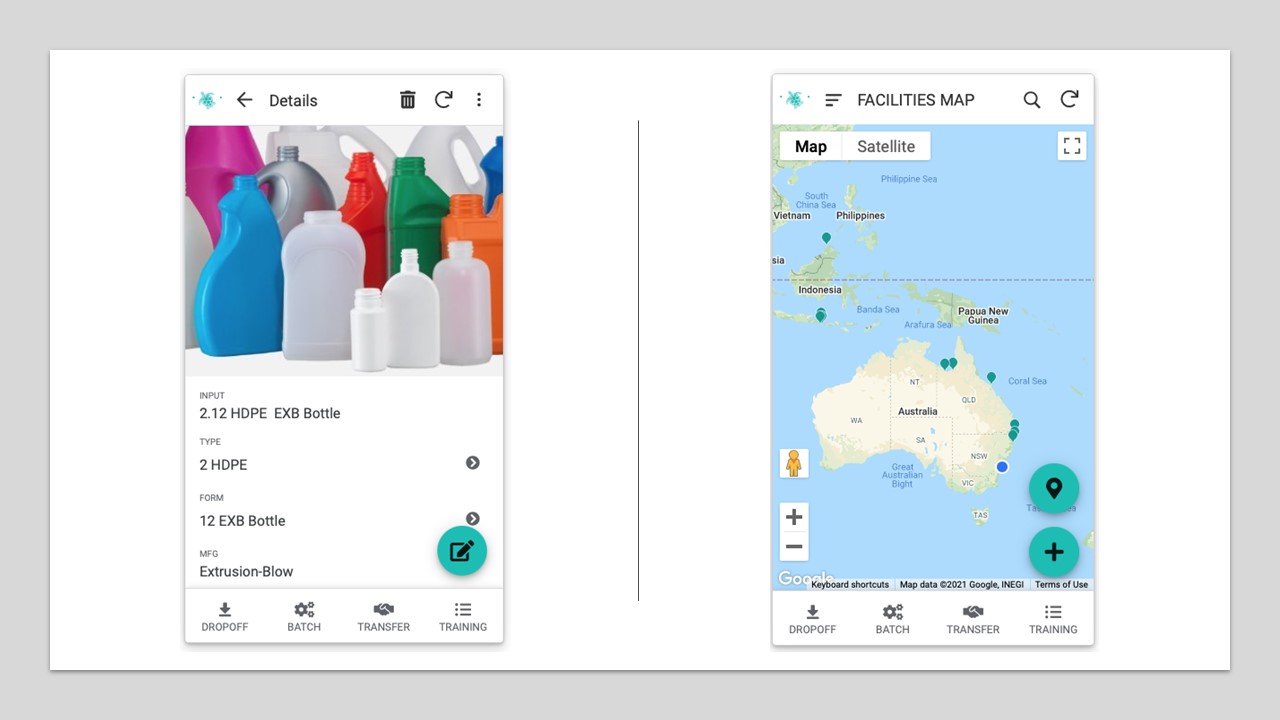
Figure 2: Plastic Collective’s Digital Solution. The Facilities Map, recycled material Details and Worker features of the application.
Challenges
So, what challenges has developing the software brought? Aly explains that the IOT aspect to the software has allowed Plastic Collective to circumvent previous methods of tracking and collecting data, that streamline the work Aly and his team carry out. “There’s a lot of remote data technology out there which is built on a legacy system – taking analogue instrumentation, then digitising that information, recording it to data loggers, and then batching data transfers. I think one of the breakthroughs for us was realising if you go straight to an IOT sensor, you can leapfrog a lot of steps and expensive equipment.” Profitability is important to be conscious of or else nothing can get done.
The IOT element is also useful for reality checks and perform preventative intervention on the machinery in case of a malfunction: “You can say ‘Hold on, processing this material used to take me 1 kilowatt hour, now it’s taking three 3 kilowatt hours, maybe I have a machine service issue, maybe one of my bearings has gone etc.’ You can actually have diagnostics and real-time data that help us support these projects in a way that wouldn’t normally become apparent until there were grinding noises, but then it would probably be too late.” This improves functionality, which is essential in the rural communities we work with.
The language barrier is an issue Aly was expecting to encounter: “Being able to deal with different languages was going to be – and will continue to be – a challenge for us.” Dialects and uncommon languages which are harder to translate accurately add to this issue. “And even the things that do get translated can have different meanings for different communities, so to be really sensitive to that is extremely important.” Sensitivity and respect of other cultures is paramount; things like data security, personal information, even taking photographs, are things that can be taken for granted, so respecting boundaries is essential in this line of sustainability.
Another consideration for Aly and his team is that livelihoods can potentially be affected by the projects. “We also know in the world of recycling a lot of people are capturing materials along routes that have developed over their own livelihood. They find that they can get good materials here, good materials there, and well those routes become a kind of trade secret to making a living.” Building trust with these communities is important then? “Yes, of course. It’s about letting these people know that we’re not trying to find someone cheaper that can hit that same route, we’re just trying to make sure that everything is done safely and properly and meets an agreed standard so they can maximise their income by linking their supply chain with others globally.”
Further developments to the software
Future opportunities to expand the software’s focus are also on the horizon, with the potential to not only help regional communities but also look at business-to-business/post industrial waste that also needs addressing.
Aly explains: “We tend to react to what consumers are seeing but the industrial waste element is just gigantic, and those industries need a tool to control and monitor their operations.” Not only would this allow businesses to potentially start applying for plastic credits but would provide an education on what good can be done in a wider sense. “It allows them to start seeing how much material is produced, how cost is involved, and how some of these interventions can be good for the community, the planet, and for business. So, I think being able to present data to those parties on dashboards that they want to look at is also important, and that’s one of the things that we want to make progress on.”
Helping the environment
Has the process of designing this software been rewarding then? “We all want to see that the work that we do makes a difference. I think probably the most rewarding thing that I see is that by allowing a community to have the data published in such a way that it can generate a plastic credit, it can really amplify their income.” And of course, it’s not just the financial aspect which is affected, it’s a great win for the environment too. “Animals are choking and dying from these materials, so you can have a measurable, visible impact on the environment and the communities that they’re in. If this software creates a nexus that allows that connection to go from one part of the planet to the other so that those things can happen through new recycling centers, I just think that’s extremely rewarding.”
Although he is intimately involved with developing the software, the most surprising thing of all is that Aly isn’t a software engineer by trade. “I’m coming from a hardware background, working with software people and coordinating a lot of different experts, but I work at this because I really care about getting plastic out of the environment. sometimes there’s nothing like being committed to a cause to make you learn new things!”
Our purpose at Plastic Collective is to show people how to find value in plastics as a resource, to understand which plastics can be recycled or recovered, and provide solutions to eliminate those which can’t be, thus preventing disposal of plastics. This will create sustainable circular economies which no longer rely on the ‘take-make-dispose’ attitude.
For more information, please contact us today.
